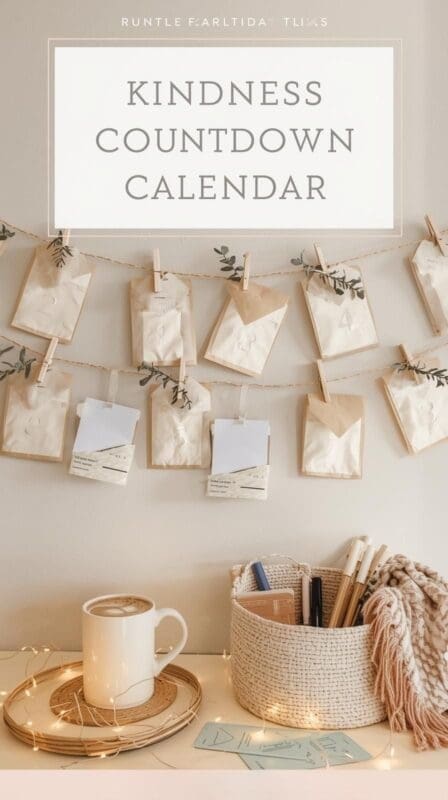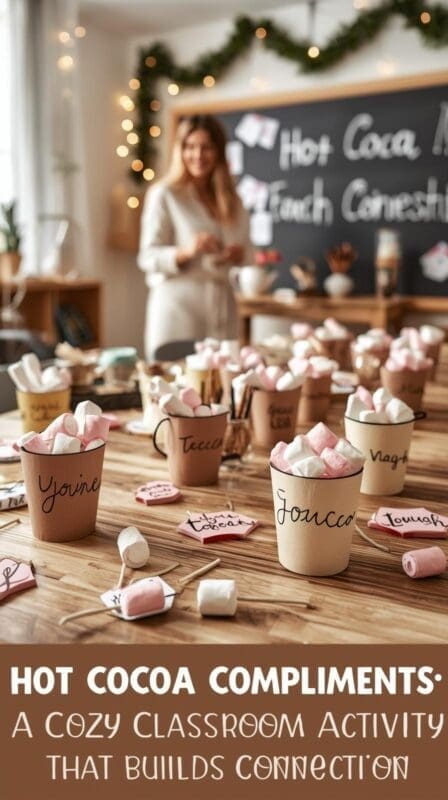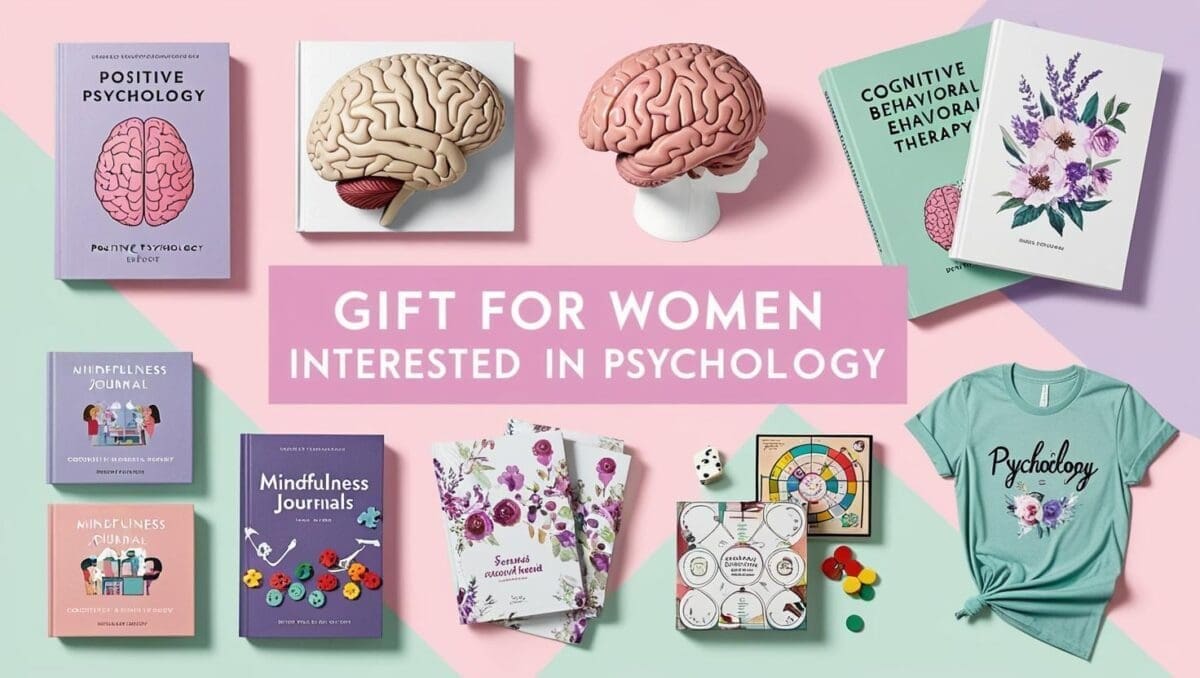The holidays bring sparkle and excitement, but for many kids, they also bring overstimulation, comparison, and big feelings.
Between gift swaps, noisy events, and schedule changes, emotions run high — and that’s exactly why December is the perfect time to pause and teach what matters most: gratitude, empathy, and kindness.
These Holiday SEL (Social-Emotional Learning) activities help children feel grounded, connected, and calm while celebrating. They combine art, reflection, and play — gentle reminders that the true magic of this season is how we treat each other.
Why Holiday SEL Matters
Social-emotional learning gives children the tools to name emotions, practice empathy, and regulate energy — essential during high-stimulus months.
When kids engage in generosity or mindfulness, they activate the prefrontal cortex (the calm, decision-making part of the brain). This helps balance the excitement of the holidays with empathy and focus.
Counselor insight: “When classrooms intentionally slow down for SEL, meltdowns drop — but connection and cooperation rise.”
🧠 Benefits of Holiday SEL Activities:
- Prevent emotional overload during exciting weeks.
- Promote community and belonging.
- Strengthen gratitude, empathy, and kindness.
- Encourage reflection before the new year.
How to Create a Calming Holiday Classroom
Before diving into crafts and reflection, set the tone with a calm, sensory-safe environment.
Try These Quick Resets:
- Dim harsh lighting and add soft string lights or lamps.
- Play slow acoustic holiday instrumentals instead of loud jingles.
- Simplify decor: focus on warm colors and natural textures.
- Designate a calm corner: add cozy seating, affirmations, and a “pause basket” with sensory tools or breathing cards.
🎄 Classroom tip: Encourage students to “check in” with a calm corner or mindfulness wall before returning to group activities.
1. Gratitude Garland
What you’ll need: Colored paper strips, pens, stapler or string.
How to do it:
Each day, students write one thing they’re grateful for on a paper strip. Link them together to form a growing classroom garland.
💬 Prompt: “What small thing made you smile today?”
Why it works:
Gratitude activates optimism circuits in the brain and trains children to focus on what’s meaningful instead of what’s missing.
🪄 Extension idea: Display the garland around your classroom door for a visual “welcome of gratitude.”
2. Kindness Countdown Calendar
Replace the usual candy advent with a Kindness Calendar.
Each envelope or pocket holds a daily act of kindness.
Examples:
- Write a thank-you note for a classmate.
- Pick up litter on the playground.
- Compliment yourself in the mirror.
Therapeutic note:
Acts of kindness release dopamine and oxytocin — chemicals linked to happiness and bonding.
3. Hot Cocoa Compliments ☕
A cozy activity that builds confidence and connection.
How it works:
- Give each student a paper cup cutout with their name.
- Classmates “fill” the cup with compliments or positive notes.
- End the week with real cocoa and a gratitude circle.
Why it works:
Peer affirmation boosts belonging, emotional safety, and self-esteem — key SEL goals.
💬 Discussion prompt: “How does it feel when someone notices something kind about you?”
4. Mindful Ornament Making
Combine creativity, sensory engagement, and reflection.
How to do it:
Create clay, paper, or salt-dough ornaments with calm words like “Peace,” “Joy,” or “Hope.”
Encourage slow, rhythmic crafting while students notice the texture and scent.
Why it works:
Mindful art strengthens emotional regulation and introduces grounding through touch.
🎨 Therapy connection: These ornaments can become take-home tools — children can hold them when they need a calming reminder.
5. The Giving Tree Project 🌟
Turn a classroom tree or wall into a visual symbol of generosity.
Steps:
- Students brainstorm small acts of kindness (helping at home, sharing supplies, reading to a younger student).
- Write each act on a paper ornament and hang it on the tree.
- After completing an act, replace the ornament with a paper star.
SEL benefit:
Builds intrinsic motivation — kindness for joy, not reward.
💫 Extension: Invite families to add their own “kindness stars” at home to bridge school-home connection.
6. Calm Corner Holiday Makeover
Even the most festive classrooms need calm zones.
How to do it:
Add cozy textures, warm lights, and soft colors. Replace affirmations with seasonal ones:
- “I bring peace.”
- “I can pause before reacting.”
- “I shine calm like a light.”
Therapeutic tie-in:
Visual reminders normalize emotional regulation and empower students to self-soothe when overstimulated.
7. Story of the Season Reflection
Use literature to teach empathy and emotional awareness.
Recommended books:
- The Invisible String (connection and love)
- The Mitten Tree (generosity)
- How Full Is Your Bucket? (kindness and empathy)
Activity:
After reading, let students draw or write their answers to:
💬 “How can I fill someone’s bucket this week?”
🧠 SEL focus: Builds perspective-taking and emotional vocabulary.
📚 Pro tip: Create a “Holiday Kindness Reading Nook” with cozy lighting and SEL-themed books.
8. Snowflake Gratitude Wall ❄️
Each snowflake represents a thankful thought.
How to do it:
- Give students paper snowflakes to decorate.
- Inside, they write one person, memory, or feeling they’re grateful for.
- Display them together to form a “Gratitude Blizzard.”
💬 Prompt: “What makes your life brighter in winter?”
Why it works:
Collective displays of gratitude strengthen community pride and belonging.
🧩 Classroom twist: Mix in staff or parent snowflakes to create a whole-school gratitude wall.
9. Mindful Music & Breathing 🎶
Add short mindfulness rituals to morning meetings or post-recess transitions.
How to do it:
- Play calm winter acoustics or instrumental piano.
- Guide students to take slow breaths — inhale light, exhale sparkle.
- Encourage them to imagine calm snow falling gently around them.
Why it works:
Music and breath synchronize the nervous system, reducing hyperactivity and anxiety.
💡 Counselor note: Breathing routines before holiday assemblies can cut down pre-event jitters by 50%.
10. Reflection Before Winter Break 🌙
Close the season with gratitude and intention.
Discussion prompts:
- “What did you enjoy giving this season?”
- “What kindness will you carry into the new year?”
- “What are you proud of learning about yourself?”
Why it works:
Ending with reflection helps memory encode positive emotions, promoting long-term well-being.
🎁 Take-home idea: Give each student a blank postcard to write a “Thank-You to Myself” note, sealed until next year.
New Section: How to Involve Families in SEL Holiday Activities
When families echo gratitude and kindness at home, SEL lessons deepen.
Try These Family Extensions:
- Family Gratitude Jar: Send home small jars and note slips. Encourage families to fill them together through December.
- Acts of Service Challenge: Share a printable checklist of 10 simple kindness acts.
- Holiday Reflection Card: Have parents write one positive observation about their child to share before winter break.
💬 Why it matters: Connection across home and school reinforces emotional vocabulary and community care.
Teacher Wellness: Modeling Calm During the Holidays
The calm you model becomes the calm your students mirror.
Quick resets for teachers:
- Keep peppermint oil or grounding stones at your desk.
- Schedule 5-minute breathing breaks between groups.
- Write your own gratitude note at the end of each day.
🕯️ Self-care reminder: You don’t have to create “perfect holidays.” You just have to create space for connection.
Budget & Materials Tips for Classrooms
- Repurpose fall decor into winter themes (reuse garlands, leaves, and paper chains).
- Shop craft stores after Thanksgiving for major markdowns on paper and glue.
- Print templates (gratitude leaves, kindness stars, bucket-filling sheets) instead of buying new kits.
- Invite donations: Families love contributing craft supplies or cocoa packets for SEL activities.
SEL Reflection Prompts to Deepen Learning
Add these to morning meetings or writing journals throughout December:
- “When did I show kindness without being asked?”
- “Who made me feel seen this week?”
- “What calms me when things feel busy?”
- “What’s one way I can share peace today?”
🧠 Why it works: Reflection transforms SEL from a one-time activity into an integrated life skill.
Printable Add-Ons for Teachers or Counselors
Encourage readers to download or print free resources (great for lead-magnet or email growth):
- Kindness Advent Calendar template
- Gratitude snowflake pattern
- “Calm Corner Holiday Posters” pack
- SEL reflection journal prompts
Final Thoughts
December can feel like a whirlwind, but the best classroom memories aren’t from glitter or chaos — they’re from moments of kindness, empathy, and calm.
When you weave SEL into your holiday traditions, you help students build emotional intelligence that lasts long after the decorations come down.
Whether it’s through gratitude garlands, calm corners, or kindness trees, these small rituals remind kids that true celebration is about connection, not consumption.
✨ “The most beautiful decorations are the smiles we help create.”

About the Author
Hi, I’m Eve, a former school counselor with a master’s degree in School Psychology and a passionate advocate for children and families navigating sensory challenges. As a mom of children with sensory sensitivities, I deeply understand the journey special-needs parents face, and I dedicate myself to researching and sharing practical solutions to help children thrive and feel comfortable in their bodies. My goal is also to empower counselors, therapists, and psychologists with creative strategies and supportive resources to enrich their everyday practice. When I’m not writing or exploring new therapeutic approaches, you’ll find me spending quality time with my family and continually seeking inspiration from everyday moments.






